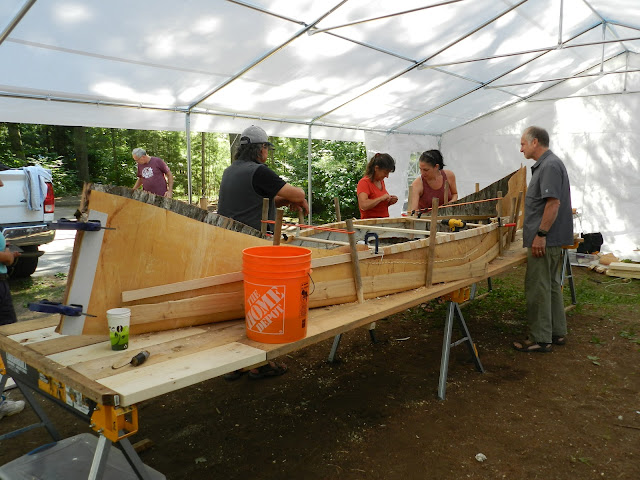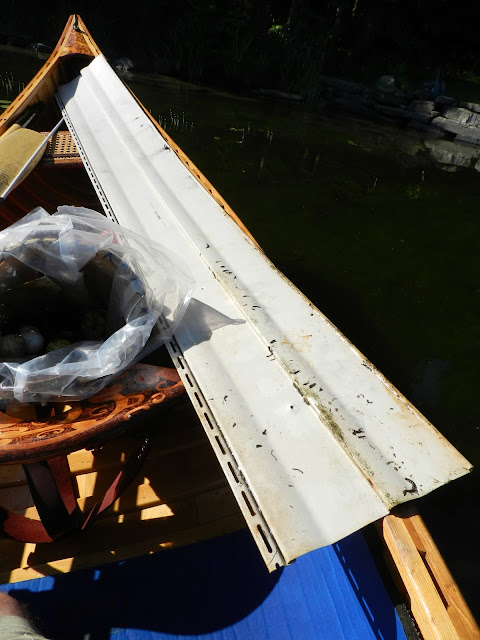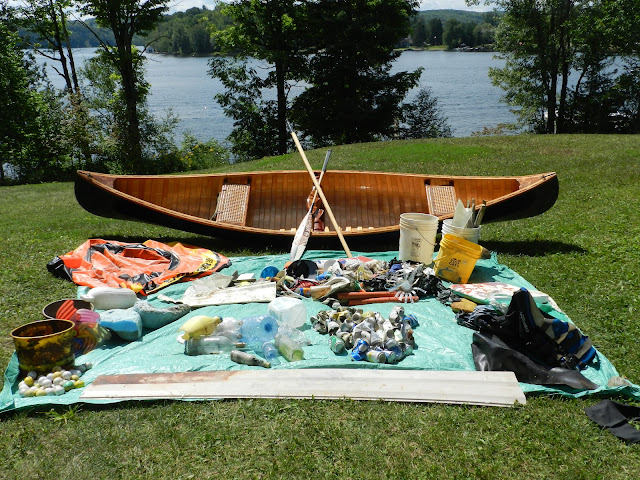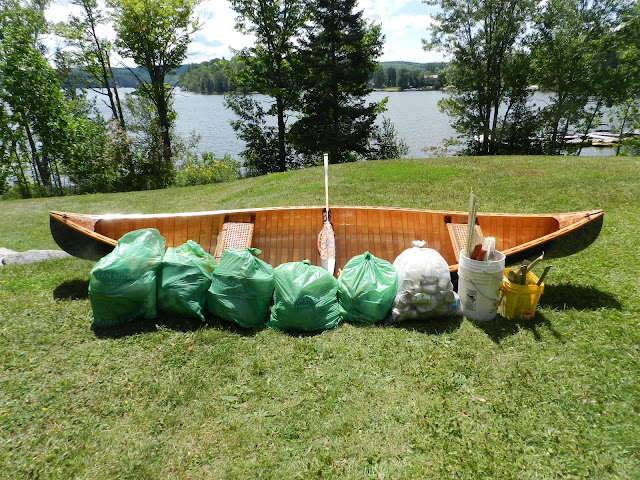I had the privilege of checking out a rare birchbark canoe build taking part in Algonquin Park. The event, taking place on unceded Algonquin Territory, was sponsored in part by Algonquin Outfitters and featured canoe builder Chuck Commanda.
I visited the build site on the 2nd morning of the event. It was taking place under the shaded protection of a canopy at the Lake of Two Rivers store (km 31.4 of the Highway 60 corridor). By then the hull had already been shaped on an elevated building bed, the gunnels lashed on with spruce root amidships and side panels stitched on. Quite a lot of work for just a single day!
Chuck was kind enough to answer some of my questions regarding pre-contact tools and various construction techniques between builders.
The build was for a roughly 14 ft hull using a single length sheet of bark for the hull, except for two small side panels along the sides. The bark was indeed impressive. I inquired about the overall length. Chuck lamented that he had found a super tree and was peeling an impressive 42 foot long sheet. At the last moment however, the part of the bark cracked resulting in this roughly 16 foot sheet and another 26 foot sheet being reserved for another future build.
Interestingly, Chuck mentioned that quality white cedar that is straight grained and without branches or knots on the lower section of the tree is getting harder to find than the actual birchbark itself due lumber practices. There was a bunch of split cedar on hand for future parts of the construction which will be taking part at the Opeongo Store near the East Gate of the Park.
Volunteers were on hand to assist with some of the building and the public was encouraged to come in close, take pictures and chat.
Also on hand to answer some cultural questions was Christine Luckasavitch, lead Cultural Consultant of
Waaseyaa Consulting, an Omàmìwininì (Algonquin) business focusing on providing cultural awareness and communication.
For those of you in the area and wish to visit. Further details are below:
AUG 15th until Friday, AUG 19th 2022
Lake Of Two Rivers Store
South of Highway 60 at km 31.4
GPS location: 45.579811°, -78.506886°
MON AUG 22nd until Friday, AUG 26 2022
Lake Opeongo, Algonquin Park
Located at Access Point #11
GPS location: 45.6356°, -78.3603°
Daily Work Hours: 9 am – 3 pm (approx.)






























